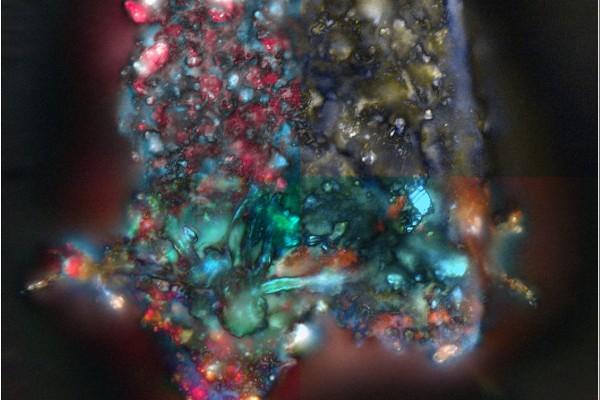
STS Elionix Scientific Images Winners Announced for Q4 2021
We are delighted to announce the winners of the STS Elionix Scientific Image Competition for Q4 of 2021. The STS Elionix Scientific Image Competition offers a unique opportunity for Tyndall researchers to flex their creative muscle, showcase and share scientific images from their research which they have discovered to be visually striking or informative to the technically excellent. Three winners are each awarded a €100 All-4-One voucher, kindly sponsored by STS Elionix.
The judges for the Q4 competition were Prof. William Scanlon, CEO; Prof. Eoin O'Reilly, Chief Scientist; Peter Smyth, Commercial Director; Ursula Morrish, Marketing & Communications Manager; Graeme Maxwell, Head of Specialty Products & Services; and Dr Daniela Iacopino, Researcher, MNS.
The exceptional quality and creativity demonstrated resulted in votes cast for two talented winners – Veronica Biolcati & Dr Vuslat Juska.
Congratulations to all!
MicroToMacro
Veronica Biolcati, Nanotechnology Group

Veronica Biolcati,
Nanotechnology Group
The purpose of this image is both to raise awareness of colour blindness and to pay tribute to the recent launch of the James Webb Space Telescope that happened on December 25th, 2021.
This cosmic-like image resembles telescope images one sees of galaxies and nebulae. The mosaic image represents a micrograph of a pigment fragment from a 500-year old medieval Irish manuscript known as the Book of Ui Mhaine (A.D. 1394) which is preserved at the Royal Irish Academy in Dublin. The project is a joint project UCC (Modern Irish) / Tyndall (NTG group) called Ink&Skin.
The image is composed of 4 quadrants, one in full colour and three simulating the types of colour blindness. The bottom left section (Z projection on the stacked sample images at various focuses) was processed to see the differences among the particles within the mixture for future analysis. The three types of colour blindness were simulated (low red, low blue, low green) to create the other three quadrants.
This highlights how common colour blindness is and suggests that colour-blind safe palettes should become the default choice when sharing information with others.
NanoForest
Dr Vuslat Juska, Advanced Sensors

Dr Vuslat Juska,
Advanced Sensors
In Nanotechnology, there is a focus on micro and nano-electrochemistry for sensing systems development. This image represents one of the surfaces developed for this purpose.
Here deposition protocol is studied on single band electrodes with 1 micron width. The resulting dendritic structures of deposited metal is used as a matrix for immobilisation of biomolecules in the presence of a functional-layer. These gold deposits are studied to create a surface that provides a solution for electrochemical applications and the 3D environment.
The greatest advantage of this system is the very large surface area achieved and improved electrical signal, as well asproviding an excellent microenvironment for biomolecules. Through a project called Agrisense, this surface is at the moment being used for the development of a multiplexed sensing system, which also has excellent antifouling properties.
NanoCatalyst
Dr Vuslat Juska, Advanced Sensors

Dr Vuslat Juska,
Advanced Sensors
This NanoCatalyst is one of the outcomes of a recent Catalyst project called Label-Free Micro Immunosensor Development for Multiple Sclerosis Detection (MISMS). In partnership with the Institute for Materials Research (IMR) at The Ohio State University, the Catalyst program was launched to immediately advance international research projects and lay the groundwork for increasing research collaborations.
The project image demonstrates one of the disk electrode array designs at a micro scale which was later studied with a miniaturised bubble template for metal foam deposition.
Resulting foams were used for electro-oxidation of glucose on a miniaturised system. The structures were used for glucose-electrooxidation to demonstrate the real-world application of miniaturised electrode array on-chip with high reproducibility and reusability.
